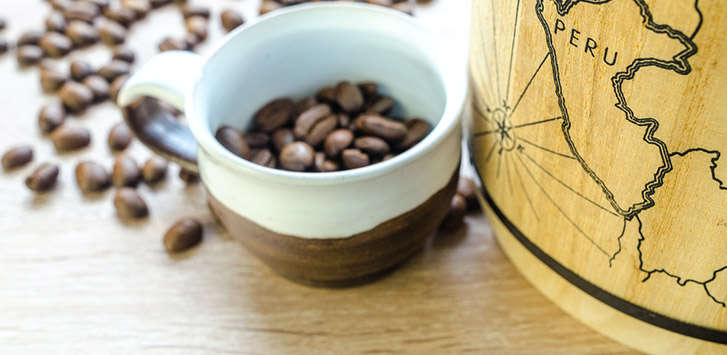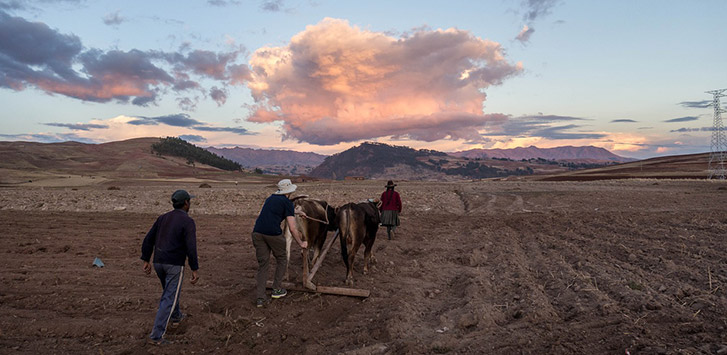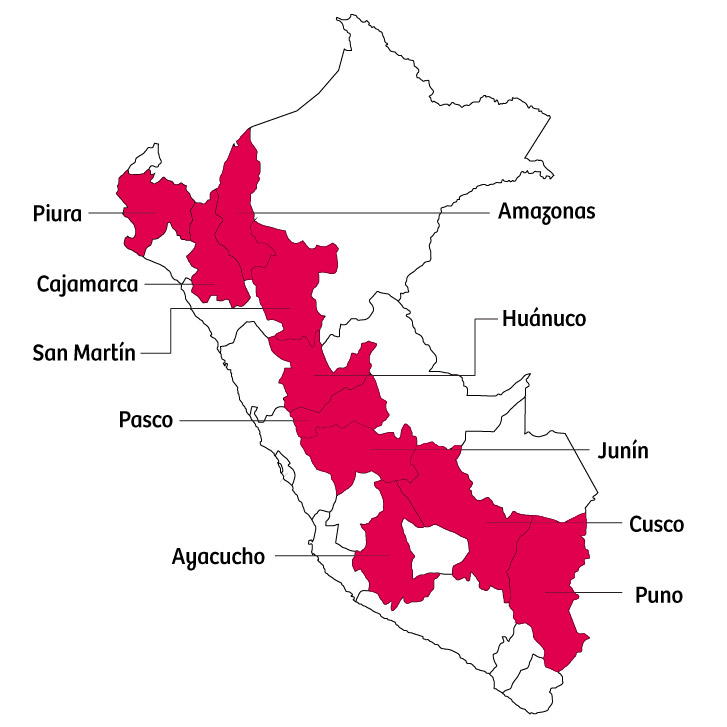
For the coffee connoisseur, Peruvian coffee is a must-have. With some of the most experienced coffee farmers cultivating the coffee beans, Peruvian coffee is one of the most well-recognized coffees in the world. The emphasis on fair trade and certified organic coffee is just one other reason you should give Peru beans a try.
History
Peru was one of the first countries in South America to grow coffee for domestic use after it received Arabica beans from Ecuador in the mid-1700s. In the late 1800s, Peru expanded into the international coffee industry. But, for years, Peru’s coffee industry lacked a competitive edge. Pervasive guerilla warfare, a focus on more traditional exportation crops (i.e. cacao) and the coffee price crash in the 1990s created an uphill battle for a country with fragile infrastructure. In the early 2000s, Peru determinedly rebuilt what had been lost through the years and created a more enduring and stable coffee industry, growing to be the 11th largest producer in the world in 2018. The government has stepped up and provided funding to increase infrastructure stability to ensure the coffee industry’s trajectory remains an upward climb.
Around 2003, Peru underwent the fair trade movement that allowed workers to be treated and paid fairly. Small coffee farms banded together to form cooperatives and take advantage of the fair trade laws, making it easier for them to sell their coffee beans internationally. In recent years, there’s been a movement for fair pay for women’s cooperatives.

Recently, the Peruvian coffee industry pursued becoming certified organic. While easier said than done, many growing regions in Peru have an unstable infrastructure that causes a lack of running water and other resources. So, coffee farmers in those regions don’t have access to pesticides and other chemicals, making their product naturally organic. Nowadays, Peru is one of the leading coffee producers for fair trade, organic coffee.
Growing Regions & Cultivation
Peru has six major growing regions: the Andes, Chanchamayo, Amazonas, San Martin, Cajamarca and Southern Highlands.

Andes
The Andes Mountains are the largest continual mountain range in the world. With one of the richest environments and agricultures, coffee beans from the Andes boast deep and complex flavors. The small farms are located at an elevation of 3,200 – 6,000 ft.
Chanchamayo
The Chanchamayo region is located on the eastern side of the Andes Mountains at the high altitude of 5,000 ft. The fertile valley has one of the best reputations for coffee, growing a medium bodied, soft and sweet bean with hints of chocolate, nuts and fruity citrus. These coffee beans are some of the highest quality in Peru.
Amazonas
One of the world’s most famous jungles, the Amazonas is ideal for coffee growing. At an elevation of 5,700 – 6,500 ft., Amazonas coffee beans contain notes of dry fruit, caramel and berries with a well-balanced body and acidity.
San Martin
The San Martin region is located in the Northern Highlands of Peru, surrounded by the Huallage River, Andean Plateau and numerous hills and ravines. As the third largest coffee growing region, coffee from San Martin is certified organic with medium body and notes of chocolate, nuts and caramel.
Cajamarca
The Cajamarca region is one of the largest Peruvian coffee farming provinces. With mainly the Typica, Caturra, Bourbon and Pacamara varietal, the coffee beans taste of vanilla, stone fruits and molasses with medium acidity and a balanced body.
Southern Highlands
The Southern Highlands make up 23% of the total coffee production in Peru. The coffee cherries are hand-planted and diligently nurtured to create some of the best, fair trade coffee.
Cultivation

Peruvian coffee is mostly grown at high altitudes – between 3,200 – 6,000 ft. – by small scale, free-trade cooperatives of coffee farmers who favor organic methods. The specialty coffee beans are primarily wet-processed, fermenting the bean to highlight the flavor profile and the subtle tasting notes. Peru has become the highest producer of fair trade coffee in the word, drastically increasing exportation with the founding of cooperatives.
CENFROCAFE is one of the largest cooperatives with over 80 farm associations. Founded in 1999, it provides technical assistance, quality control and support for commercial endeavors. CENFROCAFE is viewed as a leader in creating cooperative alliances with like-minded associations.
In recent years, kopi luwak has grown in popularity. Kopi luwak is when an animal, in Peru the coatis or uchunari, eats the highest quality coffee cherries, which then go through the animal’s digestive system and get pooped out, gathered and thoroughly washed. The animal’s digestion manages to reduce the coffee’s bitterness and impart new flavors to the coffee, based on the animal’s diet.
Peruvian Coffee Flavor Profile
While each growing region imparts its own unique flavor notes, Peruvian coffee is smooth and mellow with mild acidity and light body. Its exciting flavor profile ranges from vanilla-nut sweetness to nutty, chocolatey notes and subtle tones of citrus. The flavorful coffee is delightfully aromatic. Most Peruvian coffee beans are Arabica, a higher quality varietal.
Roasting Suggestions
Peru coffee works best with either a medium or medium-dark roast. The beans are able to handle the depth of the roasting process and create a well-rounded darker roast. A medium roast draws out the original toasted, grainy flavor of the coffee,
while a dark roast emphasizes the natural components of the flavor profile and the aroma, brewing a smooth, silky and robust cup of coffee.
Brewing Suggestions
Since Peruvian coffee is mostly a medium to dark roast with medium acidity, some of the best brewing methods for it are espresso, French press or pour over. For each brewing method, it’s essential to use the correct grind size and coffee-to-water ratio to consistently brew a high quality, pleasant cup of coffee.
Espresso
Peruvian coffee is great for espresso because it holds up so well during the roasting process and can reach a dark roast. A fine grind allows all the flavors to fully express themselves, producing a sharp, strong shot of espresso, exploding with flavor. It’s a great addition to any style of coffee, whether you’re looking for a punch of caffeine in a single shot of espresso or a sweeter, more mellow drink like a latte.
French Press
The French press creates a rich cup of coffee through an immersion brewing technique that extracts as much flavor as possible, while subtly emphasizing the bright acidity. If you’re going to brew with a French press, make sure you use a coarse grind to ensure the coffee grounds don’t get into your coffee cup and muddy the coffee.
Pour Over
Pour overs give you full control over the process. If brewing with a pour over, place medium-fine grinds in the coffee filter and pour in a circular motion to make sure that all the grinds are fully saturated. Pour overs release the fruity, nutty, chocolatey notes of Peruvian coffee.
Conclusion
If you’re looking for a fair trade, organic certified green coffee bean to try out, look no further. Coffee from Peru is packed with complex and nuanced flavors, unique to the growing regions and the country. The well-balanced body and bright acidity makes a great cup of coffee to start (or end) your day with.